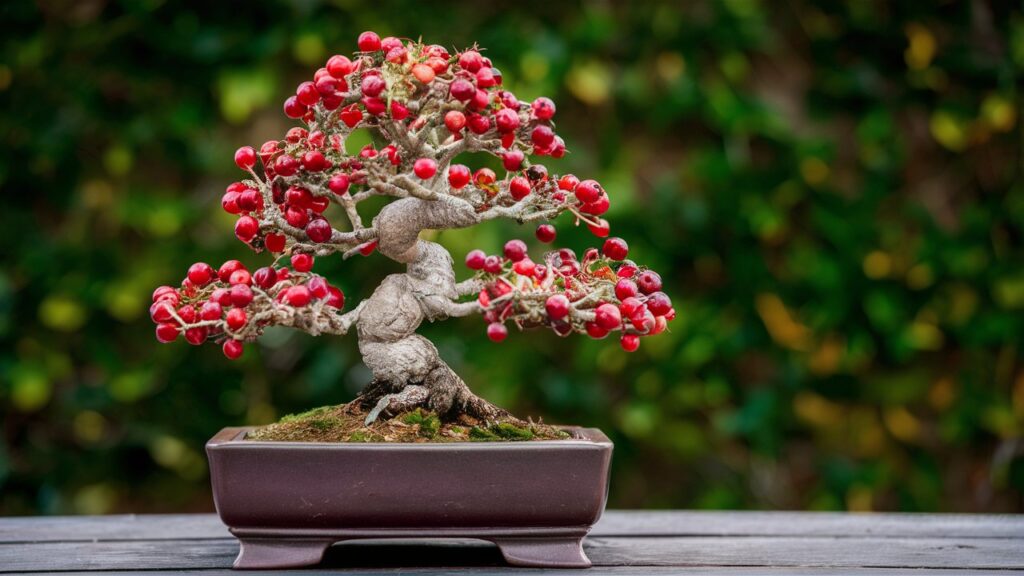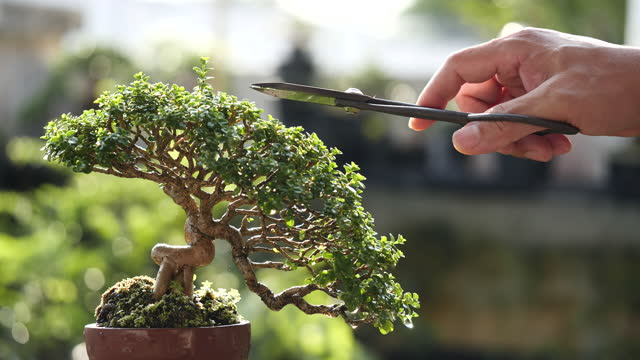The Japanese Winterberry Bonsai (Ilex serrata) is a deciduous shrub popular among bonsai enthusiasts. Its dark green serrated leaves, light pink spring flowers, and vibrant red berries on female trees make it visually appealing. Thriving in full sunlight, it’s suitable for outdoor bonsai and adapts to various climates.
Both male and female trees are needed for pollination. Japanese Winterberry is ideal for shohin-sized bonsai but can be cultivated in larger specimens. Its seasonal changes and adaptability make it an excellent choice for both novice and experienced bonsai gardeners.
Key Takeaways
ToggleBotanical Characteristics
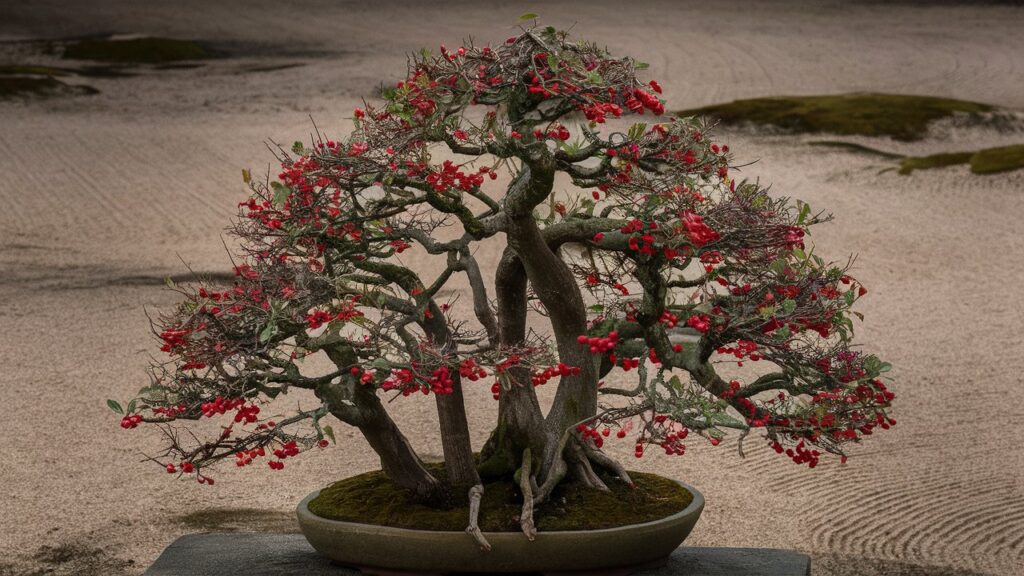
The Japanese Winterberry (Ilex serrata) features ovate dark green leaves (2-3 inches long), light pink spring flowers, and vibrant red berries on female plants persisting into winter. As a deciduous species, it undergoes seasonal changes, with leaves turning brilliant colors in autumn before falling. The berries attract birds, making it ecologically valuable. Its adaptability and unique characteristics make it popular among bonsai enthusiasts of all levels.
Light and Temperature Requirements
Japanese Winterberry bonsai require:
1. Full sun: 6-8 hours of direct sunlight daily during growing season
2. Temperature range: 15°C (59°F) to 25°C (77°F)
3. Winter protection: Not frost-hardy, needs shelter in harsh winters
4. Avoid sudden temperature changes
Proper light and temperature conditions ensure healthy growth, flowering, and berry production. Insufficient light hinders berry development. In cold regions, move plants indoors or to sheltered locations to prevent root and branch damage.
Check out more fruiting bonsai trees >>
Watering and Humidity
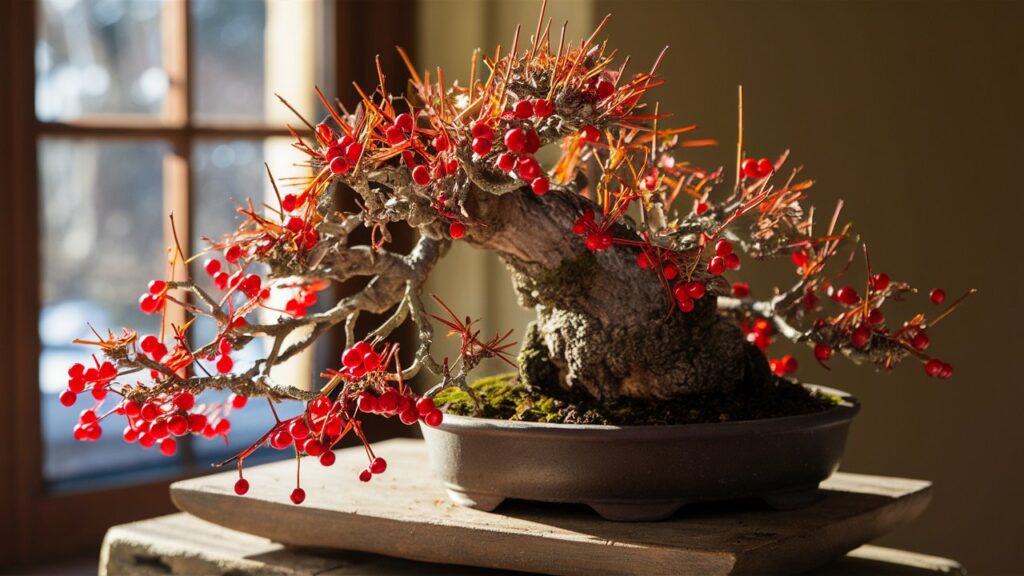
Japanese Winterberry bonsai thrive with consistent moisture but are sensitive to overwatering. Water every 2-3 days during the growing season, checking the top inch of soil for dryness. Well-draining soil is crucial to prevent root rot. Maintain moderate humidity through misting or using a humidity tray, especially in dry conditions. This balance of moisture helps ensure healthy growth while avoiding the risks of both drought and waterlogging.
Fertilizing
Japanese Winterberry bonsai require balanced nutrition for optimal growth and berry production. Apply a balanced liquid fertilizer weekly during the growing season. Solid organic fertilizers provide a slow-release alternative. Towards late summer, switch to a lower nitrogen fertilizer to promote fruiting. An NPK ratio of 6:6:6 is typically ideal, supporting both leaf health and berry production. This balanced approach to fertilization enhances the bonsai’s aesthetic appeal, overall vitality, and long-term health.
Propagation
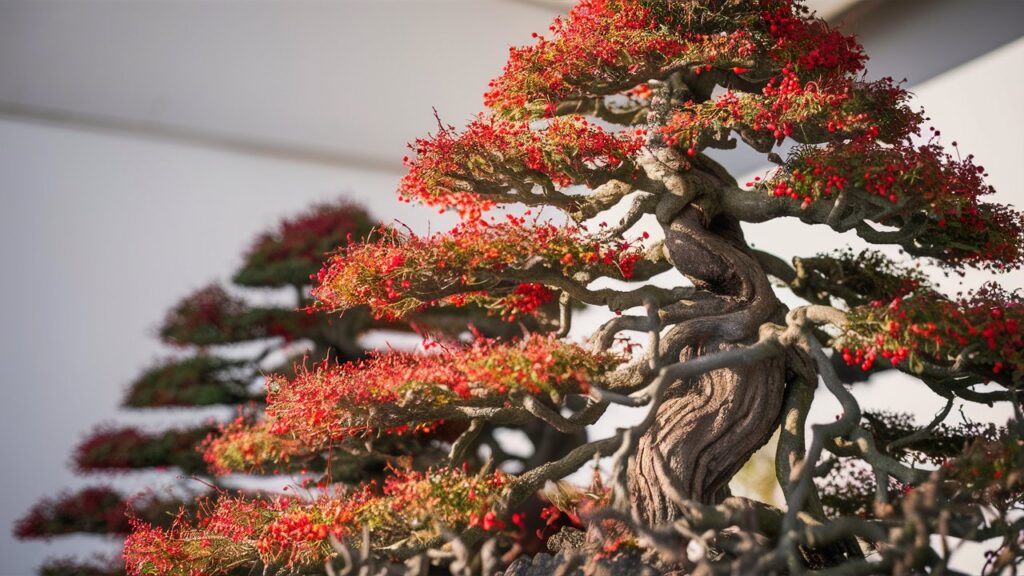
Japanese Winterberry bonsai can be propagated via stem cuttings or seeds. For stem cuttings, take 2-4 inch semi-ripe cuttings from female trees in late summer or early autumn. Use clean trimmers and consider rooting hormone to improve success. Plant in well-draining bonsai soil, keep moist, and provide indirect light.
Seed propagation involves sowing outdoors in autumn, but germination can take over two years. This method requires patience and a protected environment during germination.
Both methods can produce healthy new bonsai specimens, though stem cuttings are generally easier for beginners.
Must Read: Quince Bonsai Growing and Care Guide (Pseudocydonia sinensis)
Pest and Diseases
Japanese Winterberry bonsai are susceptible to pests like aphids, scale insects, and spider mites. Aphids are most common in spring, causing leaf curling and stunted growth. Treat infestations with insecticidal soap or neem oil.
Diseases include leaf spot and fungal infections like twig gall, often resulting from stress or poor conditions. Prevent these by ensuring good air circulation, proper watering, and well-draining soil.
Regular inspection helps catch issues early. Maintain cleanliness, avoid overcrowding, and implement proper care practices to keep your bonsai healthy and thriving, enabling it to produce its characteristic berries.
Seasonal Care
Japanese Winterberry bonsai care varies seasonally:
Spring: Prune dead or weak branches and wire for shaping as new growth emerges.
Summer: Maintain consistent watering, monitor for pests, and fertilize regularly.
Autumn: Prune to maintain shape, remove spent flowers, and reduce watering as dormancy approaches.
Winter: Protect from extreme cold by sheltering or wrapping. Ensure indirect light if kept indoors.
Adapting care to the plant’s growth cycle maintains its health and aesthetic appeal year-round.
Must read: 10 Bonsai Trees That Bear Fruits
Conclusion
Successfully growing and caring for Japanese Winterberry bonsai (Ilex serrata) involves understanding its specific needs, including full sun exposure, consistent watering with well-draining soil, and balanced fertilization. Regular pruning and wiring are essential for shaping, while seasonal care adjustments help the plant thrive throughout the year. Additionally, being vigilant about pests and diseases ensures the health of your bonsai.
This unique species offers both beauty and challenges, making it a rewarding choice for bonsai enthusiasts. Embrace the journey of cultivating Japanese Winterberry bonsai, and enjoy the stunning seasonal displays it brings to your garden!
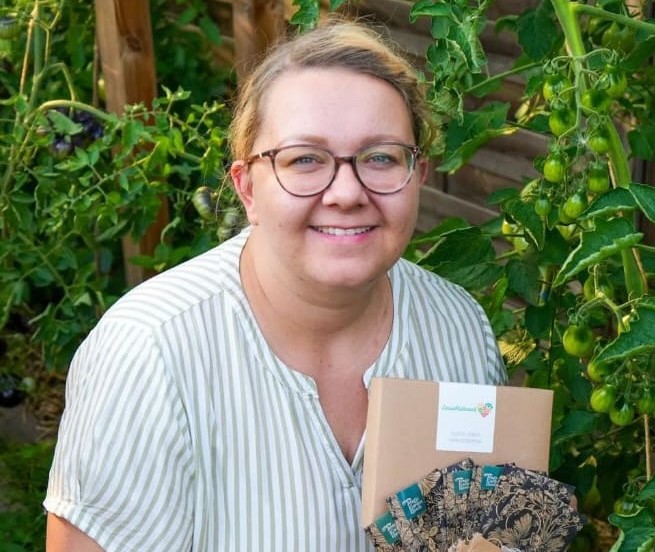
Karen Phillips, Bonsai expert and blogger. Read more about me here

